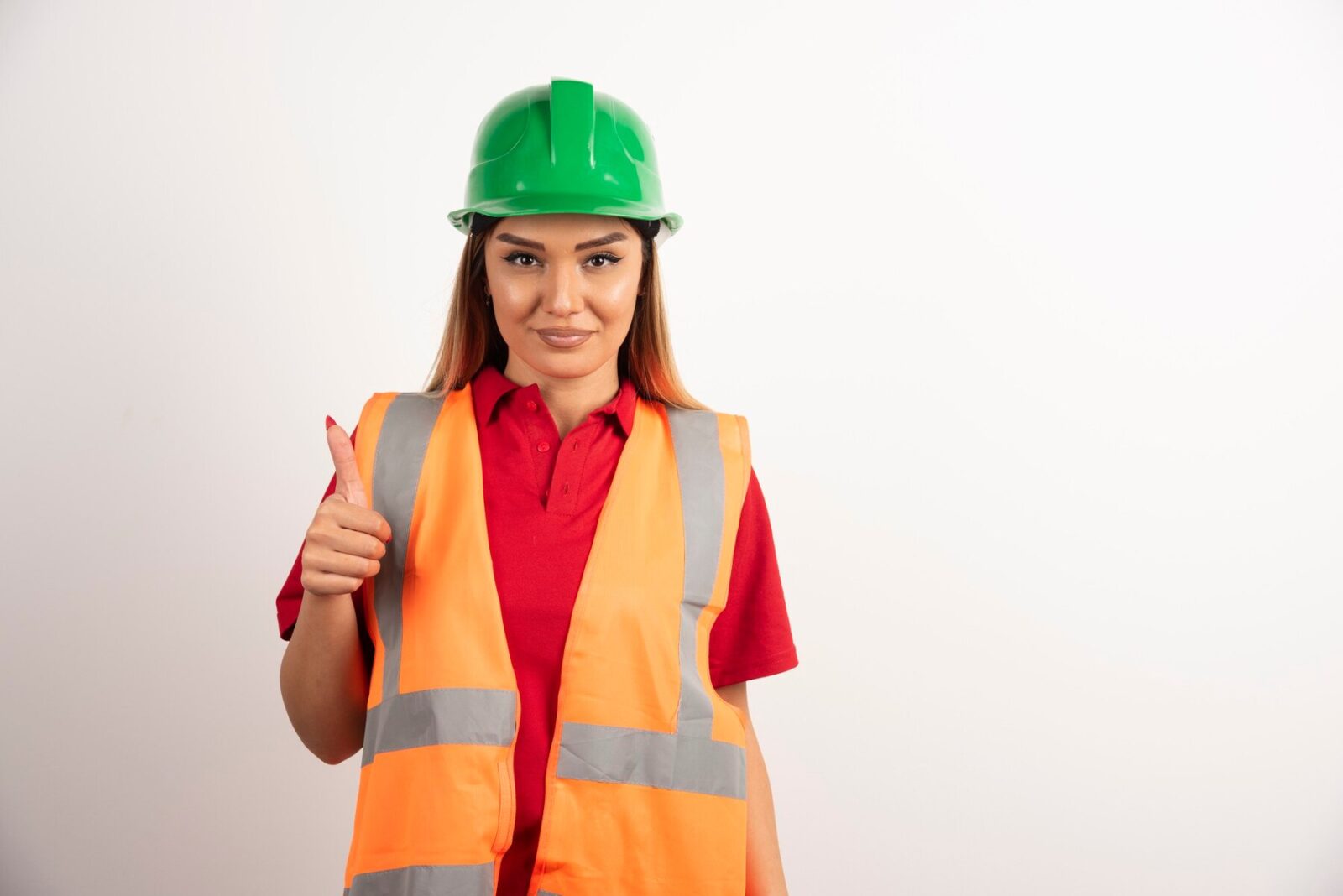
Essential PPE in the Food Industry: What You Need to Know
Overwhelmed by PPE options for food safety? Master your PPE selection for food workers safety with these practical tips.

Get 20€ off on your first order!
Safety helmets are essential in workplaces where head injuries pose significant risks, such as construction, manufacturing, mining, and logistics. These safety helmet protect workers from impacts, falling objects, and potential head trauma, all of which are critical to maintaining safety and reducing accident-related injuries. Selecting the right safety helmet, therefore, is vital to ensure workers’ health and compliance with European safety standards.
This guide will outline the key factors to consider when choosing a safety helmet, including the types available, relevant European standards, and the features that enhance safety, comfort, and functionality.
In Europe, safety hats have to meet certain requirements to make sure they cover well. In business settings, two main rules are usually followed:
Employers should verify that the helmets they provide meet these standards and any additional country-specific regulations. Compliance ensures that helmets offer reliable protection and fulfill regulatory obligations.
There are different kinds of safety hats, and each one is best for a different job. Most of the time, these ten happen:
When choosing a safety helmet, it’s essential to consider features that impact both protection and comfort.
The material changes both how heavy the hat is and how long it lasts. A lot of work hats are made of fiberglass, polyethylene, or ABS (Acrylonitrile Butadiene Styrene). Each type of material has its own benefits:
Helmets should have strong impact resistance to protect against falling objects and sudden blows. Helmets that meet EN 397 or EN 12492 standards undergo testing to ensure they can absorb the energy from impacts without breaking or transmitting the force to the wearer’s head.
For workers in warm environments, helmets with ventilation holes improve air circulation and reduce heat buildup. This feature is especially helpful in construction, manufacturing, and outdoor jobs where heat stress is a concern.
An adjustable chin strap keeps the helmet from slipping or falling off when you move. This function is very important for jobs that require climbing, working on scaffolding, or doing work at a high distance. The chin straps of helmets that meet the EN 12492 standard have been tried to make them stronger, which makes them perfect for these actions.
An adjustable suspension system allows workers to customize the fit of the helmet. Helmets typically feature either a pin-lock or ratchet adjustment system, with ratchets offering more precise fitting. A well-adjusted helmet enhances both comfort and safety by ensuring the helmet sits snugly on the head without shifting during movement.
Safety helmets today often come with add-ons that work with them, like visors, earplugs, and lights. Workers can better adapt their gear to the needs of their jobs by choosing a helmet that lets them add accessories. This makes them safer and more productive.
Proper maintenance of safety helmets is essential to ensure they remain effective. Employers should establish a regular inspection routine and replace helmets according to the manufacturer’s guidelines. Here are key maintenance tips:
Using the correct safety helmet reduces the risk of head injuries, enhancing overall safety and productivity. Proper helmet use also has additional benefits:
To pick the right helmet, you need to think about the needs of your job and the tasks you do. Here are some useful tips:
Safety helmets are an important part of keeping workers safe, and picking the right one takes a thorough look at the dangers in the workplace, the needs of the workers, and the rules and regulations. Making sure hats meet European standards like EN 397 and EN 12492 is an important part of staying safe and following the law. Employers can help make the workplace safer and more effective by choosing helmets that offer the right mix of safety, comfort, and functionality.
Take the time to learn about the features and upkeep needs of safety hats. This will help you make better decisions and keep workers safer.
Thank you! You've signed up for our newsletter.



















Overwhelmed by PPE options for food safety? Master your PPE selection for food workers safety with these practical tips.

Struggling to maintain clear vision in demanding environments? This guide is here to help. By the end, you’ll know exactly...

Electricians across Europe face unique challenges that require reliable safety glasses to ensure both protection and efficiency. Whether safeguarding against...

Overwhelmed by PPE options for food safety? Master your PPE selection for food workers safety with these practical tips.

Struggling to maintain clear vision in demanding environments? This guide is here to help. By the end, you’ll know exactly...

Electricians across Europe face unique challenges that require reliable safety glasses to ensure both protection and efficiency. Whether safeguarding against...
Get 20€ off on your first order!
Save 30% by buying directly from brands, and get an extra 10€ off orders over €100
Save 30% by buying directly form brands, and get an extra 10€ off orders over €100